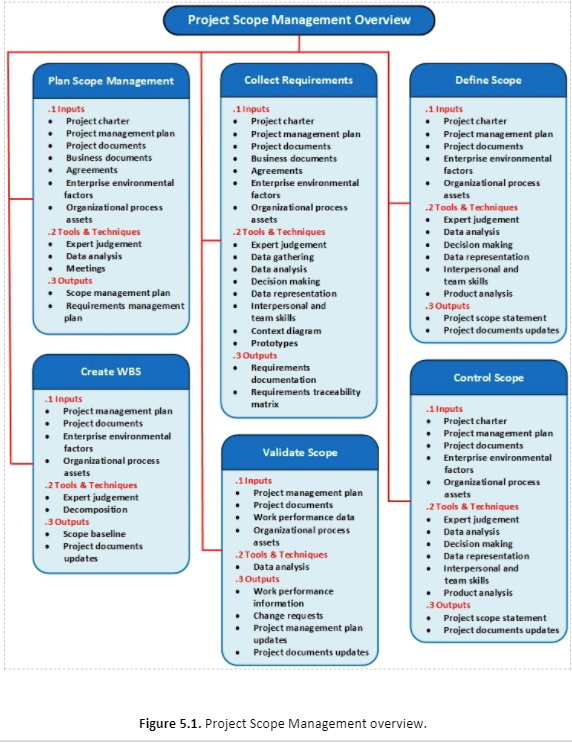
Project Scope Management includes the processes required to ensure that the project includes all the work required,
and only the work required, to complete the project successfully.
Managing the project scope is primarily concerned with defining and controlling what is and is not included in the project.
The Project Scope Management processes are:
-
* Plan Scope Management.
-
The process of creating a scope management plan that documents how the project and product scope will be defined, validated, and controlled.
-
* Collect Requirements.
-
The process of determining, documenting, and managing stakeholder needs and requirements to meet project objectives.
-
* Define Scope.
-
The process of developing a detailed description of the project and product.
-
* Create WBS.
-
The process of subdividing project deliverables and project work into smaller, more manageable components.
-
* Validate Scope.
-
The process of formalizing acceptance of the completed project deliverables.
-
* Control Scope.
-
The process of monitoring the status of the project and product scope and managing changes to the scope baseline.
Figure 5.1 provides an overview of the Project Scope Management processes.
In the project context, the term “scope” can refer to: Product scope.
The features and functions that characterize a product, service, or result. Project scope.
The work performed to deliver a product, service, or result with the specified features and functions.
The term “project scope” is sometimes viewed as including product scope.
Project life cycles can range along a continuum from predictive approaches at one end to adaptive or agile approaches at the other.
In a predictive life cycle, the project deliverables are defined at the beginning of the project and any changes to the scope are progressively managed.